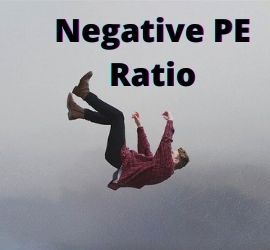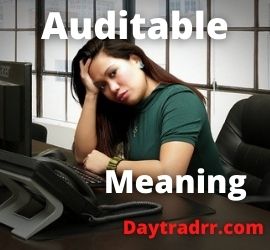What Is Book Value Per Share (BVPS)?
 The book value per share (BVPS) is a ratio of the total asset value of a firm minus its liabilities divided by the number of outstanding common shares of stock. This metric shows the minimum value of a company’s equity and gauges a company’s value as compared to its market value per share. The book value of a firm is the difference between its entire assets and total liabilities. In other words, the book value is not its market share price. If the company goes bankrupt, the book value per common share is the dollar value left for common shareholders. This is after all assets are liquidated and all debts are paid.
The book value per share (BVPS) is a ratio of the total asset value of a firm minus its liabilities divided by the number of outstanding common shares of stock. This metric shows the minimum value of a company’s equity and gauges a company’s value as compared to its market value per share. The book value of a firm is the difference between its entire assets and total liabilities. In other words, the book value is not its market share price. If the company goes bankrupt, the book value per common share is the dollar value left for common shareholders. This is after all assets are liquidated and all debts are paid.
The book value per share (BVPS) is derived by dividing the equity available to common stockholders by the number of outstanding shares. The book value per share is meaningful when contrasted with the current market value per share. It can provide insight into how a company’s stock is valued compared to its assets. If the BVPS exceeds the market value per share, the stock of the company is considered undervalued. The book value can help indicate the market direction and potential share price of an undervalued company.
Book Value Per Share (BVPS) – A Closer Look
Investors can use the book value per share (BVPS) indicator to determine whether a stock price is undervalued. Analysts do this by comparing it to the firm’s market value per share. If a company’s BVPS is more than its market value per share, the stock is said to be undervalued. Market value per share is simply the current stock share price. If the firm’s BVPS rises, the stock will be seen as more valuable. As a result, the stock price should rise as well.
In theory, BVPS is the amount that shareholders would receive if the company was liquidated. It is the funds remaining after all physical assets were sold and all liabilities were paid. However, the assets would typically be sold at market prices rather than book value. For this reason, market value is regarded as a better floor price for a corporation than book value. Nevertheless, if a firm’s share price falls below its BVPS, a corporate raider could be tempted to step in. There might be enough incentive to attempt to make a risk-free return by purchasing and liquidating the company. A balance sheet bankruptcy occurs when a company’s liabilities outweigh its assets and its book value is negative.
Book Value per Share Formula
The Book Value Per Share formula is:
BVPS = (Shareholders’ Equity – Preferred Equity) / Total Outstanding Common Shares
Shareholders’ equity is the owners’ residual claim in the company after debts have been paid. It is equivalent to a company’s total assets less its total liabilities. The result is the net asset value or book value of the entire company. Preferred stockholders have a greater claim on assets and earnings than common stockholders. Therefore, preferred stock is deducted from shareholders’ equity to determine the equity available to common stockholders.
Book Value Per Share Versus Market Value Per Share
BVPS is a conservative valuation based on historical costs. Conversely, the market value per share is a forward-looking indicator that considers a company’s future earning ability. An increase in a company’s prospective profitability or predicted growth rate should result in an increase in its market value per share. Both measures are useful tools to analyze the worth of a company’s stock price.
- Market value per share – is the current price of a company’s shares, and it is the price at which investors are willing to pay for ordinary stocks. The market value is forward-looking and takes into account a company’s ability to earn money in the future. The market value per share is predicted to rise more as the company’s expected growth and profitability rise.
- Book value per share – is an accounting-based tool that is computed using previous costs. The metric, unlike market value per share, is not forward-looking. It does not reflect the real market value of a company’s shares. As a result, the BVPS is a conservative method for investors to determine the true worth of a business’s stock. It reveals what shareholders will own after the company liquidates and all debts are paid off. When future growth and earnings projections are volatile, BVPS provides a rock bottom valuation for investors to consider.
Example of Book Value Per Share
CompUCorp has $15 million of stockholder’s equity, out of which $5 million are preferred stocks. The company has an average of 1 million shares outstanding during the period. Using the book value per share formula, BVPS is calculated as follows:
BVPS = ($15,000,000 – $5,000,000) / 1,000,000
BVPS = $10,000,000 / 1,000,000 = $10/share
How To Increase BVPS
Repurchase common stocks
One of the main ways of increasing the book value per share is to buy back common stocks from shareholders. Many companies use earnings to buy back shares. Assume that the company repurchases 200,000 common stocks from its shareholders. It will reduce the current shares outstanding to 800,000 (1,000,000 – 200,000). The revised BVPS will be as follows:
BVPS = $10,000,000 / 800,000 = $12.50/ share
Increase assets and reduce liabilities
Besides stock repurchases, a company can also increase BVPS by taking steps to increase the asset balance and reduce liabilities. For example, if CompUCorp generates $1 million in earnings during the year and uses $500,000 to purchase more assets for the company, it will increase the common equity, and hence, raise the BVPS. Similarly, if the company uses $500,000 of the generated revenues to pay up debts and reduce liabilities, it will also increase the equity available to common stockholders.
Book Value Per Share (BVPS) – Why It Matters?
In theory, BVPS is the amount that shareholders would receive if the company was dissolved. It is what would be left over after physical assets were sold and all liabilities were paid. Its usefulness, however, stems from the fact that investors use it to determine whether a stock price is low. They do this by comparing it to the firm’s market value per share or common share price. If a company’s BVPS is more than its market value per share (current stock price), the stock is considered cheap.
BVPS Drawbacks
One of the disadvantages of book value per share as a valuation approach is that it is dependent on book value. As a result, it excludes other relevant elements that can affect a company’s share price. Intangible elements, for example, affect the value of a company’s shares. However, these are not considered when computing the BVPS. The BVPS only contains the historical book value of assets (total assets less intangible assets). This represents what common stockholders will own if the company is liquidated and all debts are paid. Consider a technology firm with valuable copyrights, patents, and trademarks. BVPS would suggest that tech firms with few tangible assets in comparison to intangible assets may be undervalued. This is because the value of the intangible assets is omitted when computing the BVPS.
- Comparison metric – Book value per share doesn’t tell you much as an investor in and of itself. Analyzing the BVPS impact requires investors to compare it to the stock’s market price.
- Conservative valuation – Another limitation is that BVPS is a conservative corporate analysis. It merely measures the company’s current financial position. This does not allow for growth projections.
- Intangible assets are undervalued – Businesses with tangible assets benefit from book value. Companies with intangible assets appear undervalued. Intangible assets are not considered in the calculation.
Frequently Asked Questions
Does BVPS Differ from Market Value Per Share?
BVPS is based on historical costs. Market value per share is a forward-looking indicator that considers a company’s future earning potential. An increase in a company’s prospective profitability or predicted growth rate should result in an increase in its market value per share. The market price per share is essentially the current price of a single share of a publicly-traded stock. Unlike BVPS, market price per share price is driven by market forces of supply and demand.
Why do some stocks trade below book value per share?
Stocks can trade below their book value per share for a couple of reasons. Investor confidence can play a role. If investors do not believe in the future prospects of a firm, its share price can fall below its book value. Also, book value is essentially an accounting metric. If a company uses aggressive accounting policies, it can result in overstating net worth and understating per share valuation.
Up Next: NCIB – What Is a Normal Course Issuer Bid?
 NCIB – Normal Course Issuer Scheme is a stock buyback program in Canada where a publicly-traded firm repurchases its shares to cancel them. The term NCIB is an acronym for normal course issuer bid. Depending on how the transaction is carried out, a corporation may buy back between 5% and 10% of its shares. The issuer progressively repurchases the shares over a period of time, such as a year. This repurchasing approach allows the corporation to buy only when the price of its stock is favorable.
NCIB – Normal Course Issuer Scheme is a stock buyback program in Canada where a publicly-traded firm repurchases its shares to cancel them. The term NCIB is an acronym for normal course issuer bid. Depending on how the transaction is carried out, a corporation may buy back between 5% and 10% of its shares. The issuer progressively repurchases the shares over a period of time, such as a year. This repurchasing approach allows the corporation to buy only when the price of its stock is favorable.
In most cases, a corporation will launch an NCIB normal-course issuer bid because it believes its publicly traded stock is cheap. Repurchasing shares reduces the number of shares available for purchase in the market. The approach raises demand while decreasing supply, resulting in higher stock prices.




